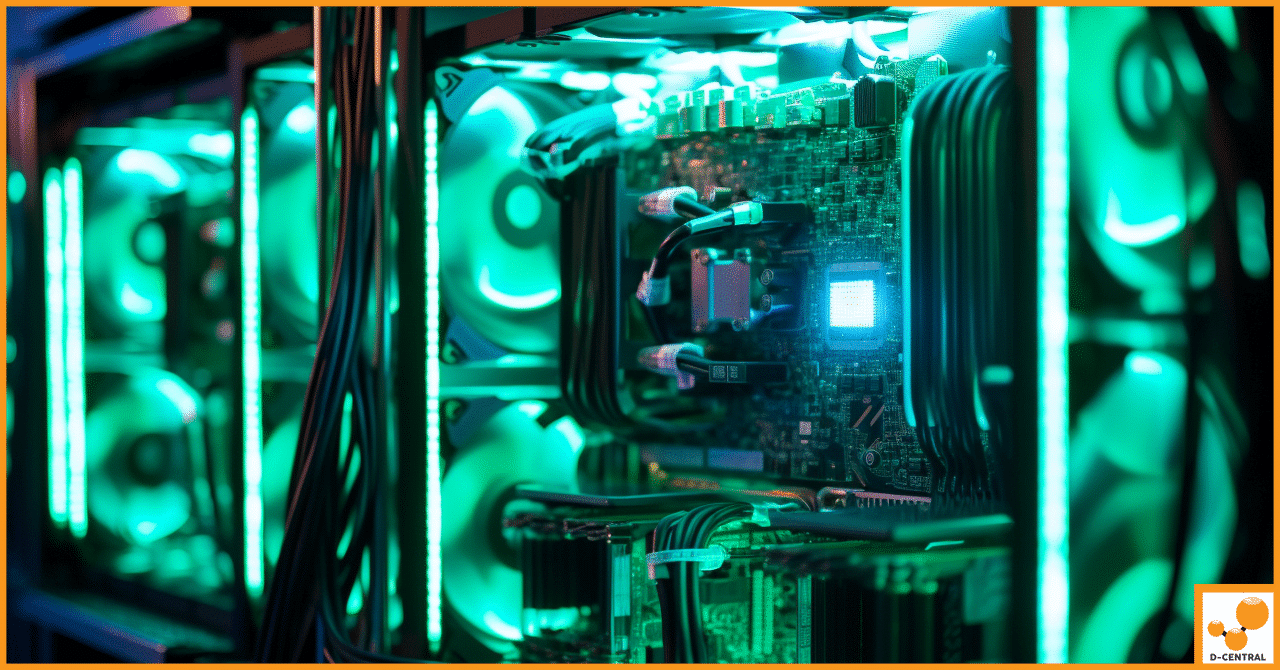
ASIC Mining and Cybersecurity: The Ultimate Guide to Protecting Your Rig from Threats
In the rapidly evolving landscape of cryptocurrency, Application-Specific Integrated Circuit (ASIC) mining has emerged as a cornerstone of the blockchain
4479 Desserte Nord Autoroute 440, Laval, QC H7P 6E2

With the rapid growth of cryptocurrency mining, there has been a constant need for innovative solutions to improve efficiency and performance in mining operations. One such solution is the use of immersion mining rigs, which employ liquid cooling technology to ensure optimal functionality and longevity of the mining hardware. These rigs have revolutionized the way mining is done, providing several advantages over traditional air-cooled systems.
In this article, we will delve into the world of immersion mining rigs, exploring the evolution of mining hardware and cooling solutions, understanding the benefits of liquid cooling in ASIC miners, and examining the technology behind liquid cooling. We will also discuss key factors affecting mining efficiency and performance, mining trends and updates in the cryptocurrency community, and how to set up and maintain an immersion mining rig. Finally, we will compare immersion mining rigs with traditional air-cooled mining equipment and discuss the future of immersion mining rigs and liquid cooling technology.
Cryptocurrency mining has come a long way since the early days when individuals could mine coins using their personal computers. As the mining process grew more complex and resource-intensive, specialized hardware, such as ASIC miners, emerged to meet the growing demands of the mining community. These powerful devices were able to mine cryptocurrencies at a much faster rate than regular computers, but they also generated a considerable amount of heat.
To prevent overheating and ensure optimal performance, various cooling solutions were developed for mining hardware. Initially, air cooling was the most common method, with fans being used to dissipate heat generated by the mining equipment. However, as mining operations expanded and the need for more efficient cooling solutions increased, liquid cooling technology emerged as a viable alternative. This technology proved to be more effective at managing heat and maintaining optimal hardware temperatures, paving the way for immersion mining rigs.
Liquid cooling offers several advantages over air cooling, making it an ideal solution for maintaining optimal temperatures in ASIC miners. Some of these benefits include:
Liquid cooling technology relies on the principle of heat transfer through conduction and convection. In immersion mining rigs, the mining hardware is submerged in a non-conductive, non-corrosive liquid coolant, which absorbs the heat generated by the mining equipment. The warm coolant is then pumped through a heat exchanger, where the heat is transferred to a separate cooling medium, such as water or air. The cooled coolant is then circulated back into the immersion tank, effectively maintaining the mining hardware’s temperature within a safe range.
There are two main types of liquid cooling systems used in immersion mining rigs: single-phase and two-phase. Single-phase systems utilize a single liquid coolant, which remains in a liquid state throughout the entire cooling process. Two-phase systems, on the other hand, rely on a coolant that changes from liquid to vapor as it absorbs heat, and then back to liquid as it releases the heat in the heat exchanger. Both types have their own unique advantages and applications, depending on the specific needs of the mining operation.
Several factors can influence the efficiency and performance of a mining operation, including:
The ever-changing landscape of the cryptocurrency community has a direct impact on mining trends and updates. Some notable developments in recent years include:
Setting up an immersion mining rig requires careful planning and attention to detail, as well as a solid understanding of the liquid cooling technology involved. Some key steps in the setup process include:
Maintaining an immersion mining rig involves regular monitoring and maintenance of the hardware and cooling system, as well as the occasional replacement of components such as pumps and filters. This ensures the continued efficiency and performance of the rig and helps to prevent potential issues that could impact mining profitability.
While immersion mining rigs offer several advantages over traditional air-cooled mining equipment, it is essential to weigh the pros and cons of each option before making adecision. Some factors to consider when comparing the two include:
Ultimately, the choice between an immersion mining rig and an air-cooled system will depend on the specific needs and goals of the mining operation. For those looking to maximize efficiency and performance, immersion mining rigs may be the better option, while those prioritizing cost-effectiveness and ease of maintenance may prefer air-cooled systems.
One of the primary goals of any mining operation is to maximize profitability, and liquid-cooled hardware can help achieve this in several ways. Some strategies for maximizing mining profitability with liquid-cooled hardware include:
As the cryptocurrency market continues to evolve, it is likely that immersion mining rigs and liquid cooling technology will play an increasingly important role in mining operations. Some potential developments in this area include:
Immersion mining rigs and liquid cooling technology have revolutionized the world of cryptocurrency mining, providing a more efficient, effective, and sustainable solution for managing heat and maintaining optimal hardware temperatures. Understanding the benefits of liquid cooling in ASIC miners, the technology behind liquid cooling, and the key factors affecting mining efficiency and performance is essential for maximizing profitability and staying competitive in a rapidly changing market.
Whether you’re a seasoned miner or just getting started, immersion mining rigs and liquid cooling technology offer a promising path to improved efficiency, performance, and profitability. By staying up-to-date with mining trends and updates in the cryptocurrency community, and carefully considering the pros and cons of different mining hardware and cooling solutions, mining operations can stay ahead of the curve and continue to thrive in this exciting and dynamic industry.
What are immersion mining rigs?
Immersion mining rigs are mining setups that employ liquid cooling technology to manage heat and maintain optimal temperatures for mining hardware. The hardware is submerged in a non-conductive, non-corrosive liquid coolant, which absorbs and dissipates the heat generated during the mining process.
What are the benefits of liquid cooling in ASIC miners?
Liquid cooling offers several advantages over air cooling in ASIC miners. It provides improved thermal performance, reduces noise levels, decreases energy consumption, and allows for a more compact design. Liquid cooling is more efficient in managing heat and maintaining optimal hardware temperatures, resulting in better performance, longevity, and cost savings.
How does liquid cooling technology work in immersion mining rigs?
Liquid cooling technology in immersion mining rigs relies on the principles of conduction and convection. The mining hardware is submerged in a liquid coolant, which absorbs the heat generated by the equipment. The warm coolant is then pumped through a heat exchanger, where the heat is transferred to a separate cooling medium, such as water or air. The cooled coolant is then circulated back into the immersion tank, effectively maintaining the mining hardware’s temperature within a safe range.
What factors affect mining efficiency and performance?
Several factors can influence mining efficiency and performance, including the quality of the mining hardware, the choice of cooling solution, the mining algorithm, and the cost of energy. High-quality hardware, efficient cooling solutions like liquid cooling, suitable mining algorithms, and minimizing energy consumption are all key considerations for maximizing mining efficiency and performance.
What are some trends and updates in the cryptocurrency community related to mining?
Some notable trends and updates in the cryptocurrency community include the rise of ASIC-resistant cryptocurrencies, increased focus on energy efficiency in mining, and growing interest in decentralized mining to mitigate the centralization of mining power. These developments aim to level the playing field, reduce environmental impact, and enhance the stability and security of the cryptocurrency ecosystem.
How do I set up and maintain an immersion mining rig?
Setting up an immersion mining rig involves careful hardware selection and designing the immersion tank to accommodate the hardware and liquid cooling system. Installing the cooling system, including the pumps, heat exchangers, and coolant lines, is a crucial step. Regular monitoring, maintenance, and occasional component replacements are essential for maintaining the efficiency and performance of the immersion mining rig.
How do immersion mining rigs compare to traditional air-cooled mining equipment?
Immersion mining rigs offer superior thermal management, reduced noise levels, decreased energy consumption, and a more compact design compared to traditional air-cooled mining equipment. However, the initial setup cost of an immersion mining rig may be higher, and the maintenance requirements for the cooling system may be more complex.
What is the future of immersion mining rigs and liquid cooling technology?
The future of immersion mining rigs and liquid cooling technology is promising. Advancements in liquid cooling technology can lead to more efficient cooling solutions. Increased adoption of immersion mining rigs can be expected as the benefits become more recognized. Integration with renewable energy sources and continued innovation in cryptocurrency mining will also shape the future of immersion mining rigs and liquid cooling technology.
DISCLAIMER: D-Central Technologies and its associated content, including this blog, do not serve as financial advisors or official investment advisors. The insights and opinions shared here or by any guests featured in our content are provided purely for informational and educational purposes. Such communications should not be interpreted as financial, investment, legal, tax, or any form of specific advice. We are committed to advancing the knowledge and understanding of Bitcoin and its potential impact on society. However, we urge our community to proceed with caution and informed judgment in all related endeavors.
Related Posts

In the rapidly evolving landscape of cryptocurrency, Application-Specific Integrated Circuit (ASIC) mining has emerged as a cornerstone of the blockchain

Bitcoin mining, the process by which new bitcoins are introduced into circulation and transactions are verified and added to the

Bitcoin mining has rapidly emerged as a technological and economic force across the African continent. By leveraging computational power to